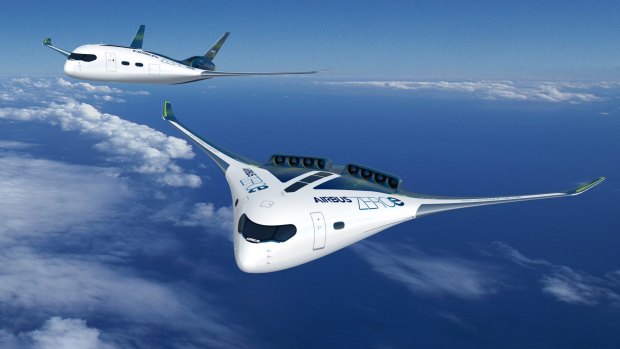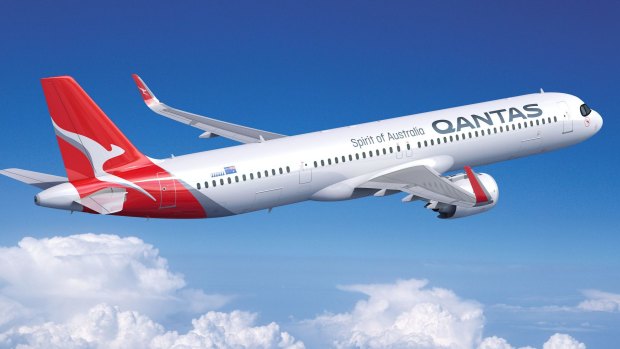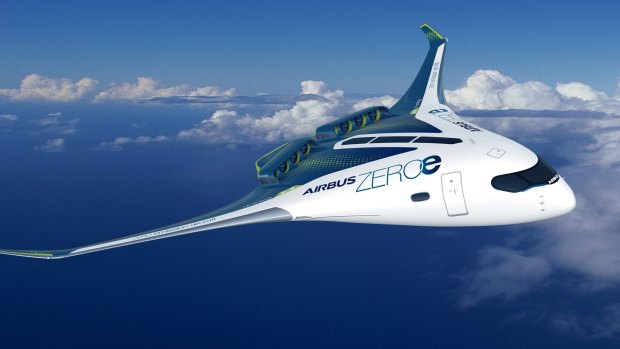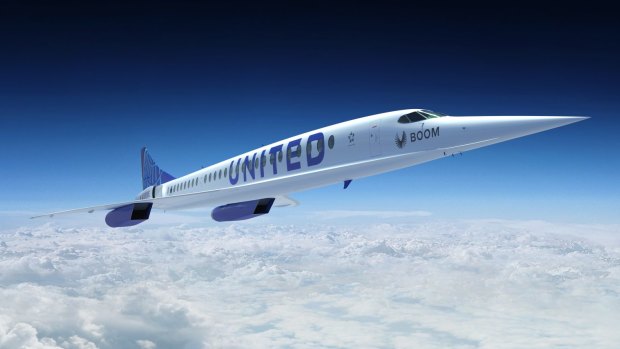This was published 2 years ago
Aircraft of the future: Sustainability the goal in new airline planes coming soon
By Michael Gebicki

Airbus's ZEROe concept encompasses three aircraft, a twin-engine, narrow body jet, a twin-engine turboprop and a blended-wing body design, a radical flying wing (pictured).Credit: Airbus
After the pandemic pause, there are some big changes in the wings for the aviation industry. A potential successor to the 747, Boeing's much anticipated 777X twin-engine giant will enter service in 2023, but so will a much smaller aircraft that promises big things.
New aircraft – coming soon

The single-aisle A321XLR is the latest iteration of Airbus' popular A320 family. Seating 18-220 passengers in a twin-class configuration, Airbus is claiming a 30 per cent improvement in fuel consumption per seat for the A321XLR compared with previous generation aircraft. That's down to more aerodynamic winglets – Airbus calls them Sharklets – and improved performance from its engines, either CFM's International's LEAP-1A or Pratt & Whitney's PurePower PW1100G-JM geared turbofan.
What makes the A321XLR a game changer is its range – an incredible 8700 kms. That catapults it into premier position among narrow-body commercial aircraft. By contrast, Boeing's 737 MAX 9 has a range of 6570 kms while the MAX10's figure is 6110 kms. That makes it possible for the A321XLR to fly non-stop from Melbourne to Tokyo, or Brisbane to Honolulu. In the northern hemisphere, that range would take the Airbus non-stop between London and Vancouver, Tokyo and San Francisco, Seoul and Seattle, New York and Istanbul and New Delhi and London. That's a big selling point since the A321XLR allows airlines to operate a narrow-body aircraft on long-distance, lower demand routes where a twin-aisle aircraft might not be economical.
So far Airbus has notched up more than 450 orders from over 20 airlines, with Air Canada, JetBlue, Wizz Air and United Airlines all in the queue. Qantas has placed an initial order of 20 A321XLRs with an option to buy many more to replace its fleet of Boeing 737s and 717s. When those aircraft are phased out over the coming decade, Qantas will be operating an all-Airbus domestic fleet.
New aircraft – the future

. Credit: Airbus
Airbus is touting its ZEROe project as the shape of things to come if the aviation industry is to achieve its zero-emission target. The ZEROe concept encompasses three aircraft, a twin-engine, narrow body jet, a twin-engine turboprop and a blended-wing body design, a radical flying wing. The latter is a concept design, but blended-wing aircraft aren't exactly new. The B2 Stealth Bomber first flew in 1989, but to achieve the zero-emission objective, Airbus is proposing to power all three aircraft with hydrogen fuel.
There's huge appetite for zero-emission commercial aircraft as the aviation industry strives to establish its green credentials. Qantas chief executive Alan Joyce has just announced plans for Qantas to achieve zero carbo emissions by 2050, and a 25 per cent reduction by 2030. Some of that can be achieved by a combination of sustainable aviation biofuel and carbon credits, but even at the current inflated cost of petroleum-based aviation fuel, biofuels are far from cost competitive. Nor are they available in anything like the quantity that would be required to bring about a major shift in the aviation industry's carbon footprint.
On the other hand, hydrogen is the most abundant chemical in the universe, and burning hydrogen fuel in a jet aircraft engine would produce only water vapour and a small amount of nitrogen oxide, with zero carbon emissions. Hydrogen can either be burned in a jet engine or used as a fuel cell to generate electricity to power a propeller-driven aircraft.
One of the two most common ways of producing hydrogen is electrolysis, which requires "splitting" water with electricity. If the electricity used in that process comes from sustainable sources such as wind or solar – and Australia has the potential to produce enormous quantities of both – the aviation industry is well on the way to achieving near-zero emissions.
Since hydrogen is a gas at room temperature, it requires a huge volume to deliver energy equivalent to conventional aviation fuel, and that rules out hydrogen gas as a jet fuel source. Cooling hydrogen to -253°C it becomes a liquid, massively increasing its energy density, and in that state it becomes a feasible jet engine fuel. That requires a very special fuel tank, which is one reason we won't be seeing hydrogen-powered commercial aircraft for some time. Airbus is hoping to have the world's first zero-emission commercial aircraft in the air by 2035.
What about supersonic flight?

Credit: AP
They're sleek, they look gorgeous and they zip through the sky at incredible speed – but are supersonic aircraft really right for our time? The most dogged of the supersonic crusaders is Denver-based Boom Supersonic, which hopes to have its commercial jetliner, the Overture, flying in 2030. That was given a substantial boost in mid-2021 when United Airlines announced an order for 15 Overture jets.
The technical challenges are well known, and Boom is using the Anglo-French Concorde as a template. There are still plenty of obstacles, such as the sonic boom that poses problems for overland flights, the limited passenger numbers carried aboard these pencil-thin aircraft and the high fuel consumption and carbon emissions at high altitude, which puts it out of step with an industry eager to demonstrate its eco-credibility, and a world that demands it.
See also: Glimpse of the future: Rolls-Royce building the world's largest airliner engine
See also: Giant A380 takes to the skies powered by cooking oil
Sign up for the Traveller newsletter
The latest travel news, tips and inspiration delivered to your inbox. Sign up now.